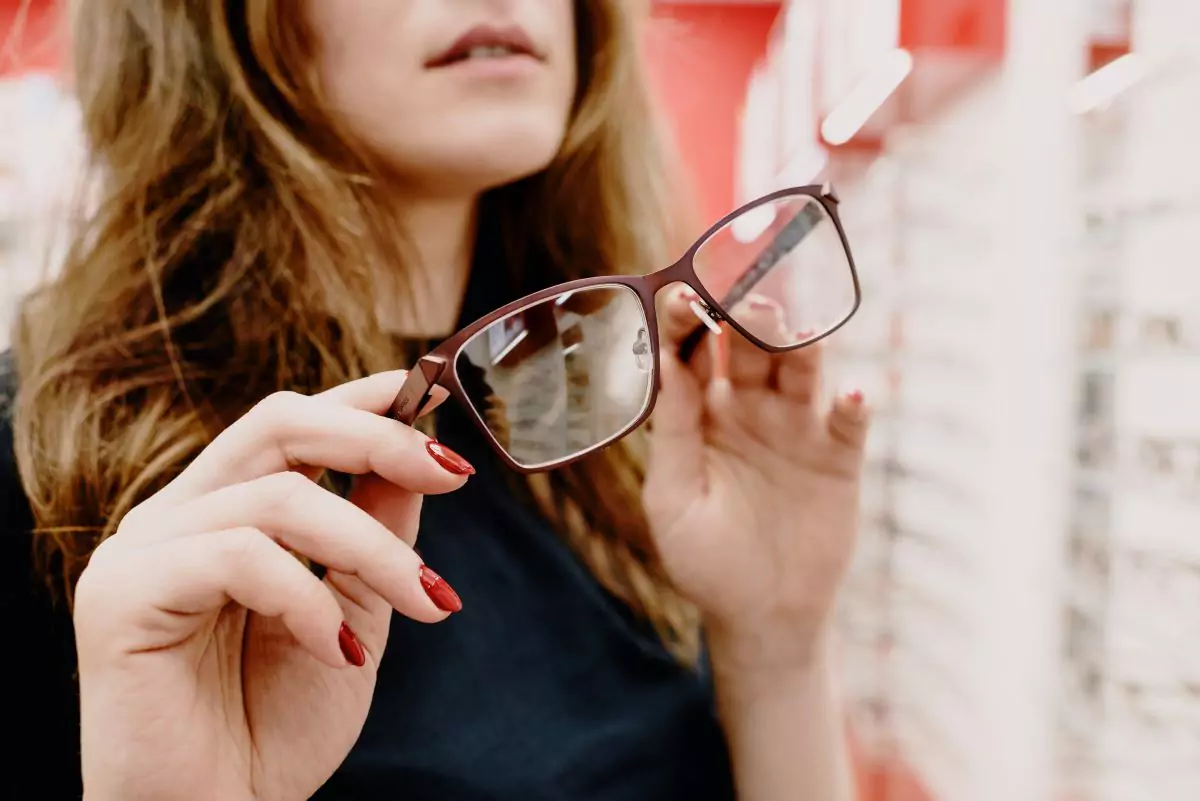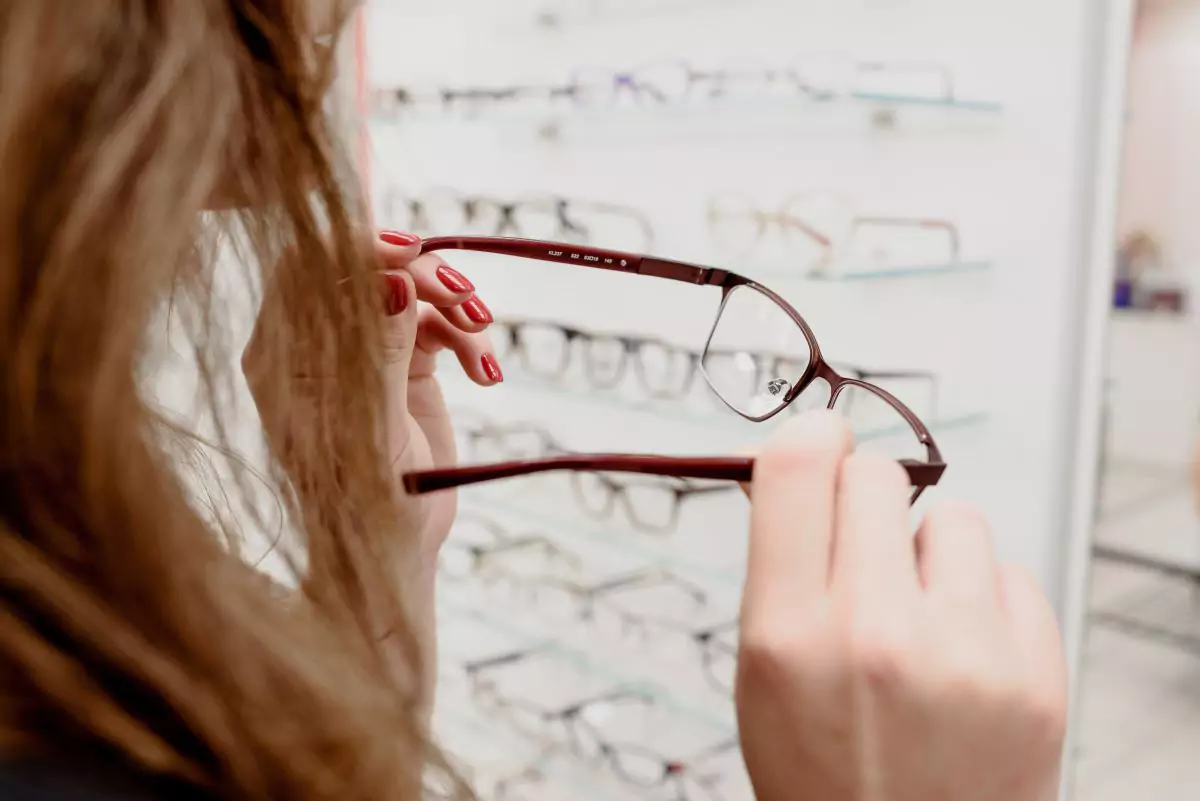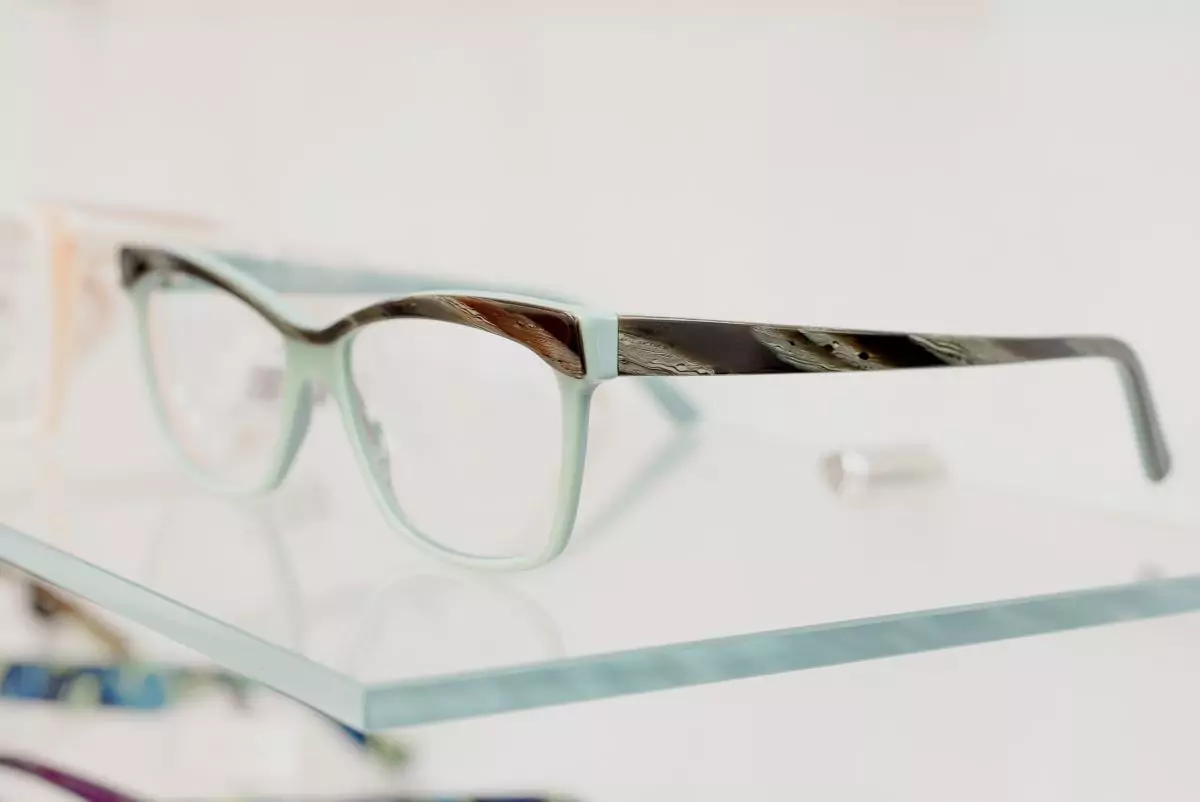Why Are Eyeglasses So Expensive?
Have you ever felt like your eyes were playing tricks on you when you saw the price tag for a new pair of glasses?
In this article, let’s go through why glasses cost so much and hopefully shed some light on this sometimes-confusing topic.
What affects glasses prices?
1. The frame material
One of the main factors that influence the cost of glasses is the material used to create the frames. After all – there are so many options!
Titanium frames are a popular choice for those seeking high-quality and long-lasting eyewear. They’re also generally lightweight, durable, and hypoallergenic, with the main tradeoff being they tend to be pricier.
Acetate frames, made from renewable materials, offer a wider variety of colors and patterns. They’re typically more affordable than titanium frames while still providing a comfortable and stylish fit.
Another cost-effective option is plastic frames. While they too can be lightweight and versatile, they’re not quite as durable as other materials.
For a unique and natural look, wooden frames are a great option. They can vary significantly in price depending on the type of wood used and the craftsmanship involved. Generally, wooden frames are more expensive than plastic and acetate but cheaper than titanium frames.
2. Lens customization
The complexity of your lens prescription also contributes to the cost of your eyewear. For those with simple prescriptions or non-prescription lenses, the manufacturing process is less complex, typically resulting in lower prices.
On the other hand, people with stronger prescriptions may prefer high-index lenses because they’re thinner and lighter than standard lenses. However, the advanced technology used to create these lenses makes them more expensive.
Those who have multiple vision issues such as nearsightedness and farsightedness have more complex prescriptions, which require them to wear bifocals or progressives. These cost more as they need to be made with a more intricate manufacturing process, and combine multiple prescriptions within a single lens.
3. The technology used in your lenses
Clear lenses are the most basic and affordable option. Adding special coatings like a blue light filter, anti-reflective, or water-resistant may drive up the price, but could be worth it to improve the lenses’ performance and longevity. It all depends on what your lifestyle requires.
The shape of the lenses can also affect the price, with spheric lenses being more affordable but potentially causing some distortion toward the edges. On the other hand we have aspheric lenses, which are more expensive but offer reduced distortion and a more aesthetically pleasing appearance.
4. Lens materials
The material of the lenses not only affects the price, but also the functionality of your glasses.
Standard lens material, also known as Columbia Resin 39 (CR-39), is a popular option for eyeglasses due to its affordability and durability. Although not as impact-resistant as more expensive lens materials, they are still a good choice for everyday use and offer clear vision correction.
As we’ve mentioned – high-index lenses are thinner and lighter than traditional materials like glass or plastic. This is achieved by increasing the refractive index, which is the measure of how much a material can bend light. The higher the index, the thinner and lighter the lens can be while still providing the same level of vision correction.
Polycarbonate lenses are ideal for people with an active lifestyle or those who need stronger prescriptions due to their durability and resistance to impact.
Another high-performance lens material is Tribrid lenses. By combining the advantages of polycarbonate and high-index materials, these lenses offer a thin, lightweight design that is also highly impact-resistant. These advantages come with a higher price tag, but for those looking for superior quality and performance, Tribrid lenses are an excellent choice.
5. Where you buy your glasses from
Buying glasses from designer or high-end brands can mean you’re getting a considerable markup due to the reputation and perceived quality associated with the brand.
Traditional optical stores also have higher prices due to additional expenses like rent, utilities, and middlemen fees. On the other hand, online eyewear stores provide more competitive pricing by cutting out traditional supply chain costs and offering a more comprehensive selection at lower prices.
How the making of your glasses affects the price
One major reason eyewear prices can be high is due to the quality of materials used in the design and creation of frames and lenses.
Best case scenario, paying higher for better quality materials should mean increased comfort and durability.
Additional features like blue light coatings or transition lenses can also increase the price. The complex supply chain and industry dynamics also contribute to high prices, with each step adding additional costs like transportation and middlemen fees.
However – it’s not just about materials used. Unfortunately, higher prices can often be a simple case of a price mark-up set by the retailer.
The traditional eyewear industry plays a big role in this, with big brands dominating the market and controlling pricing across the board.
There are also many prestigious fashion brands who have expanded their ranges to offer prescription eyewear or sunglasses. Many people are willing to pay much more money to own a designer brand name pair. However, understandably – not everyone is willing to fork out thousands of dollars for a pair of glasses for everyday wear.
Why are online eyeglasses retailers cheaper?
In recent years, the eyewear industry has seen a rise in online retailers offering glasses at lower prices, due to their ability to eliminate most costs associated with traditional brick-and-mortar stores. Operating online means they do not need physical storefronts, which in turn reduces overhead expenses like rent and utilities.
They also cut out the middleman by sourcing frames and lenses directly from manufacturers, This helps to streamline the supply chain and reduces unnecessary costs.
One more factor in the popularity of online retailers is that they offer unmatched convenience, allowing customers to browse hundreds of styles and consult with opticians or customer service representatives from their homes. Here at Mouqy, we offer a virtual try-on feature so any curious visitors can use their webcam or phone camera to preview how our glasses will look on your face before purchasing anything.
Are cheap glasses worth it?
The term “cheap” often has a negative connotation, but it doesn’t always equate to poor quality. If you know where to look, it’s possible to find budget-friendly eyewear that combines functionality, style, and quality.
At Mouqy, we believe everyone deserves to have high-quality, affordable eyewear. To do that, we cut out unnecessary frills or expenses that can drive up costs, like middlemen or distributors. Rather, we sell directly to you, the customer.
Glasses are a necessity after all, and you can find plenty of options here from $10. Our philosophy is “See What Matters,” which means we focus on delivering glasses that work and last.
Furthermore, we believe in the quality of our product, which is why we offer a money-back guarantee. In case you’re not completely satisfied with your order, you can return it and receive a full refund.
Tips to save money when buying glasses
Here are a few helpful tips to keep your eyewear costs down without sacrificing quality or style:
- Firstly, be sure to utilize any vision insurance benefits you may have. This can help cover some or all of the cost of your glasses, so check your insurance plan to determine the extent of your coverage.
- Another option is to use FSA or HSA funds if you have them available. These pre-tax funds can be used to pay for your glasses, saving you significant money.
- Shopping for glasses at secondhand stores like Goodwill or Salvation Army can also be a great way to find cheap eyewear. These stores often have a variety of frames available, including vintage and unique styles. However, it’s important to note that these glasses may not come with a prescription or must be adjusted by an optician to fit properly.
- Online shopping is another way to save money on eyewear. Online retailers often have more competitive pricing than traditional brick-and-mortar stores, as they cut out the middleman and eliminate the operational costs of physical storefronts.
- Choosing affordable frame materials like plastic or acetate can also keep costs down. These materials offer style and comfort without the higher price tag associated with titanium or wood.
- It also helps to evaluate what kind of add-ons you need. While some lens customizations and coatings can be essential, sticking to a budget means you need to prioritize which ones facilitate your vision correction needs the most.
- Lastly, watch out for discounts, seasonal sales, or special offers from your favorite eyewear brands or retailers. Many companies offer first-time customers discounts or coupon codes through email newsletters or social media channels as well.
How much should you spend on glasses?
Ultimately, the amount you should spend on glasses depends on your needs, preferences, and budget.
There’s no one-size-fits-all answer, but by carefully considering all the factors contributing to the cost, you’ll be better equipped to make an informed decision that suits your unique requirements. Good luck!

Written by:
Angie Garcia
















